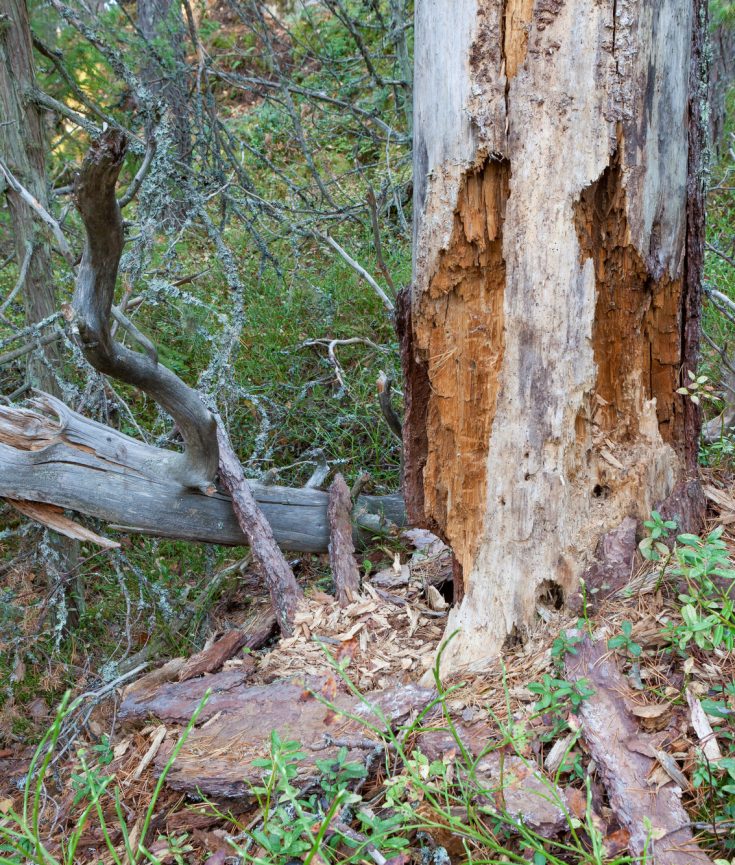Are you trying to figure out how to save a dying tree? Well, you’re in the right place.
It can be hard to determine the signs of a sick tree, or even more so when it is dying. However, there are some general symptoms that you can look out for in this tedious process.
In this article, we will cover how to identify and how to save a dying tree. You can also check the expert tree care service by Riverside arborists.
So keep reading to learn more.
Symptoms of a Dying Tree
Unlike all other plants, particularly flowers, who die quickly without any notice of anything being wrong, trees exhibit specific signs that are precursors to their condition.
We are going to cover these signs now so that you can understand whether or not you can help your tree. It’s also important to note that due to the variety of signs, some of them might or might not apply to certain tree species.
In general, if a tree has very few leaves in a season when all other trees are blooming, something must be wrong. Another sign is when the bark gets dry and falls off on its own.
Losing Leaves
Some trees, such as the deciduous trees lose all of the leaves in the winter and get new ones when the time arrives. If you notice leaves falling in a season when they shouldn’t, then you can be sure that an issue is persistent.
For instance, if an evergreen tree slowly becomes brown, this is probably due to disease. Also, check if brown leaves are persisting throughout the fall and winter. When everything is alright, these leaves should fall off their own accord. If they don’t, something must be wrong.
Branch Changes
When you start to see a branch losing bark, there is an issue you need to deal with. In some cases, a dead tree’s branches start to break, and then you know it will die quickly.
Also, you might find wood-boring insects and fungi on the dead branches. Of course, some trees prune themselves, such as the pecan. However, most don’t.
This means you have to do it when you notice these problems, it’s already a bit too late, but not a lost cause.
Trunk Changes
When the trunk has no bark, you know there is an issue. Also, the presence of carpenter ants, and or the presence of insect holes shows that the tree is sick.
Also, if you find fungi, much like on the branches, that constitutes an issue.
Root Changes
In some cases, you might think if the tree is just dormant. Well, if the roots are slimy, there might be an issue. Not to mention, if you find wood-boring insects and fungi (once again), it’s a sure-fire problem.
Also, if you fine fiber knots in the root, you probably will not be able to save the tree.
How to Save a Dying Tree
First and foremost, you need to identify the true cause for the damage and effective solution for treating the cause. However, this can be very difficult, even with the information provided above. That’s why we recommend that you employ the services of an arborist who will be able to determine the cause, as well as provide the solution.
This tree service is a great example of somebody who does their job right. In any case, let’s take a look at some suggestions on how to save a dying tree.
Winters in the US are quite long and severe. This can dry up the trees, so try to root-feeding them with fertilizer and water.
Also, the root cause of many tree deaths is under-watering. You have to understand how much water a tree needs and provide it that much regularly. If you find it difficult to do it manually, you can purchase an automated system.
Do not use a lawnmower near the exposed roots of the tree. The blade can permanently damage the roots, which will contribute to moisture, leading to bacteria and fungi.
Do not sprinkle weed fertilizer close to the trees, because they are not meant for them.
Also, different trees required different approaches in pruning. Make sure that the method used is suitable. If you are unsure, speak to a specialist.
When mulching the area around the tree, leave enough breathing space for the roots (to avoid root rot).
Potential Recovery Suggestions
Also, make sure to destroy any section of the tree that is infected. This will help prevent the spread of infection.
Sterilize all of the shears and knives used to cut sections of diseased trees. You can use household bleach or other disinfectants. Also, heat sterilizers will work.
When making organic fertilizer for your home, make sure that none of the diseased plants is used.
Also, water your dying tree regularly. Add plant nutrients to help the tree mediate the disease.
In some cases, trees die from root rot because of over-watering. Therefore, water is only needed when the soil appears fragmented and dry. If there is water-logging, make sure to develop a drainage system for it.
You can simply remove soil from the area and expose the roots to fresh air.
Dead Trees No More
Now that you know how to save a dying tree, you are well on your way to take care of your natural kingdom. In any case, some trees are past saving and they simply need to be removed, so that other trees are not affected, so keep that in mind.
If you’re interested in similar articles, feel free to check out our filtered pages at the top of the website.

